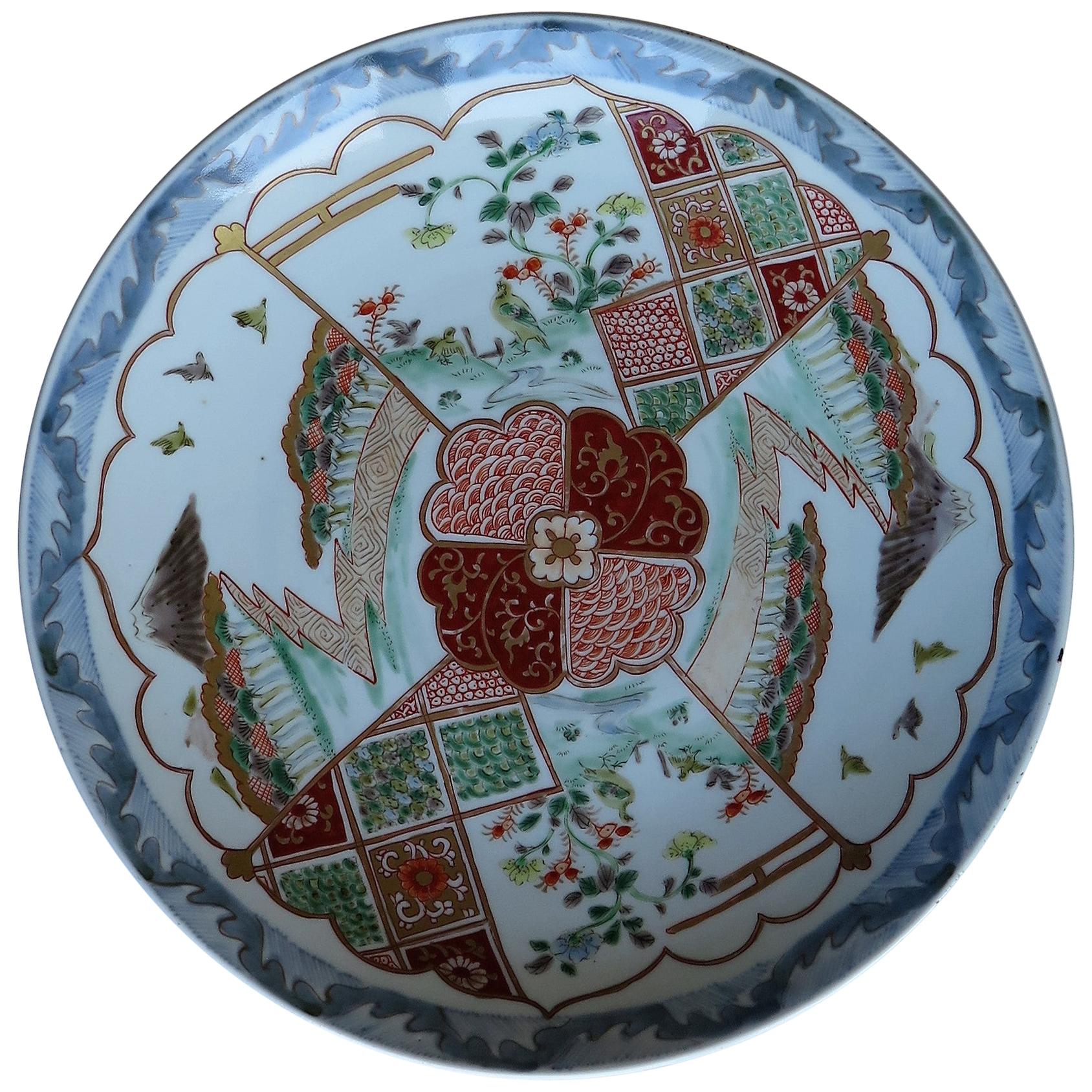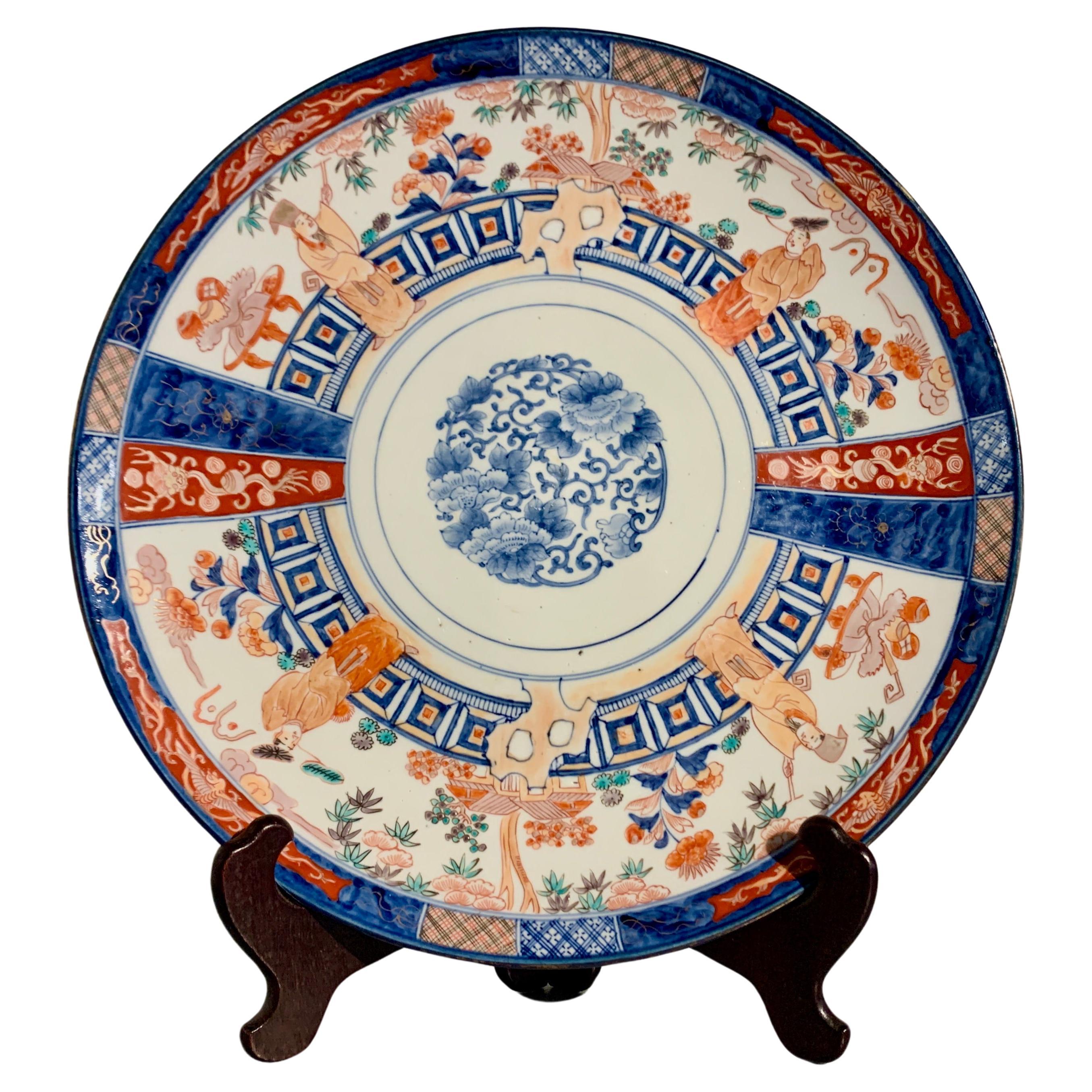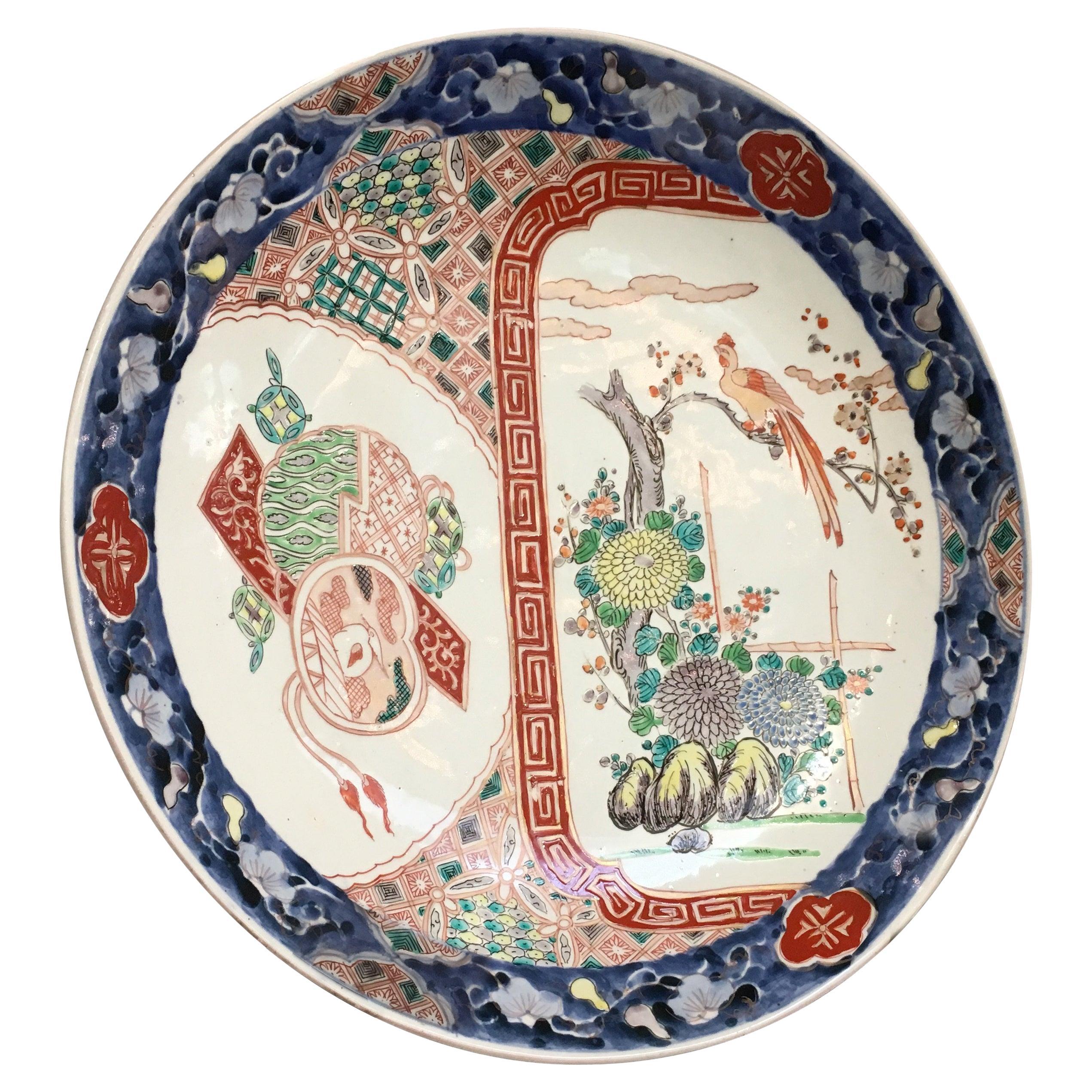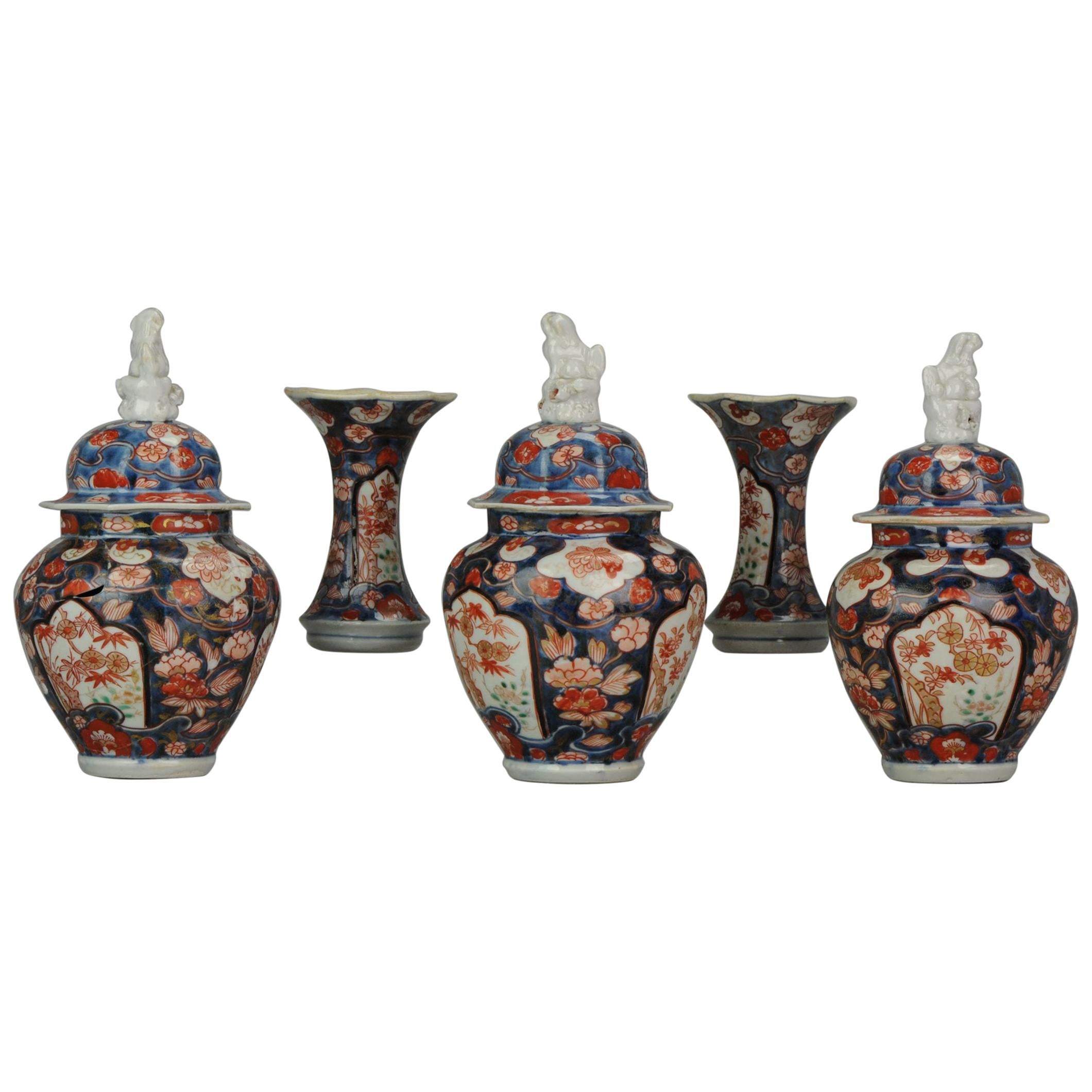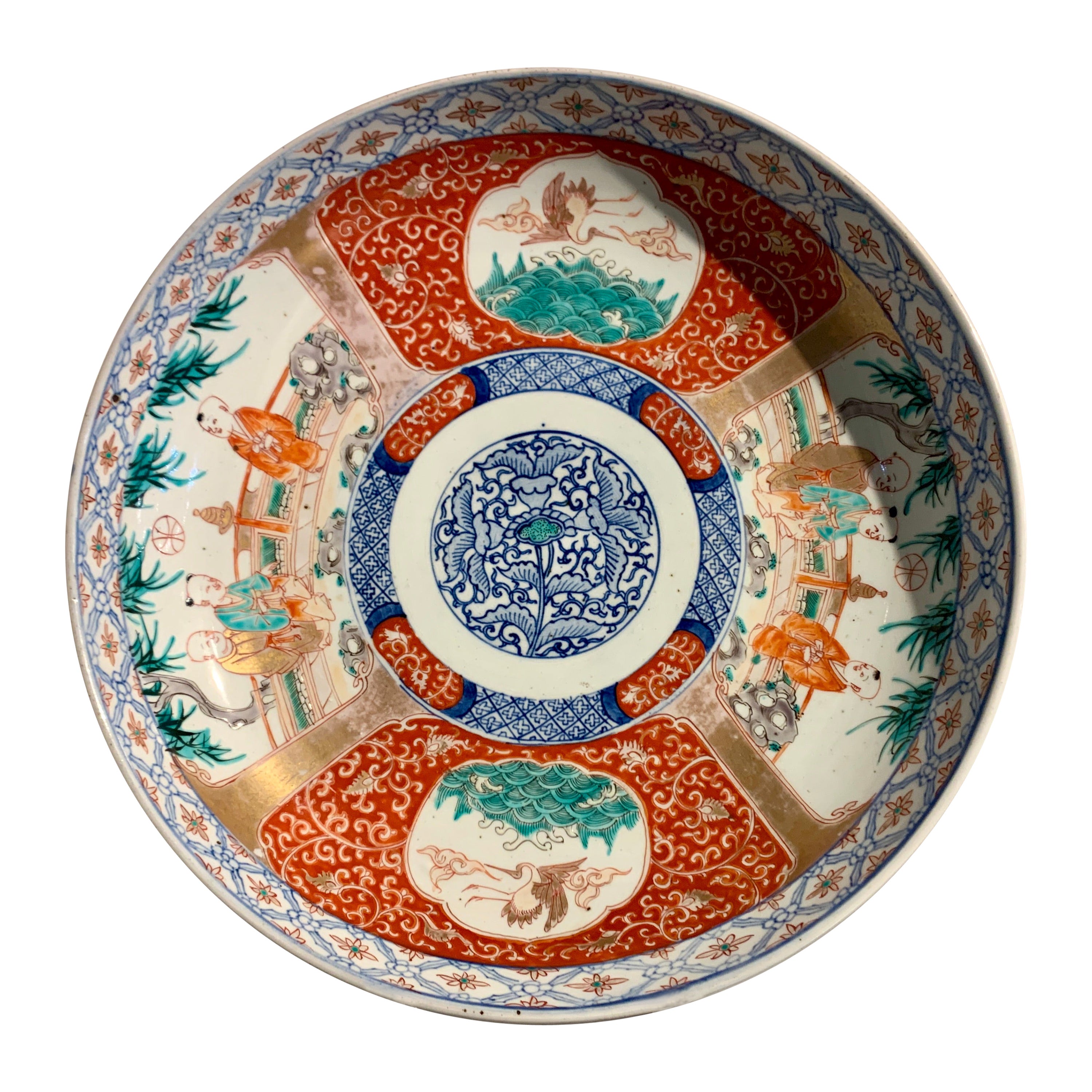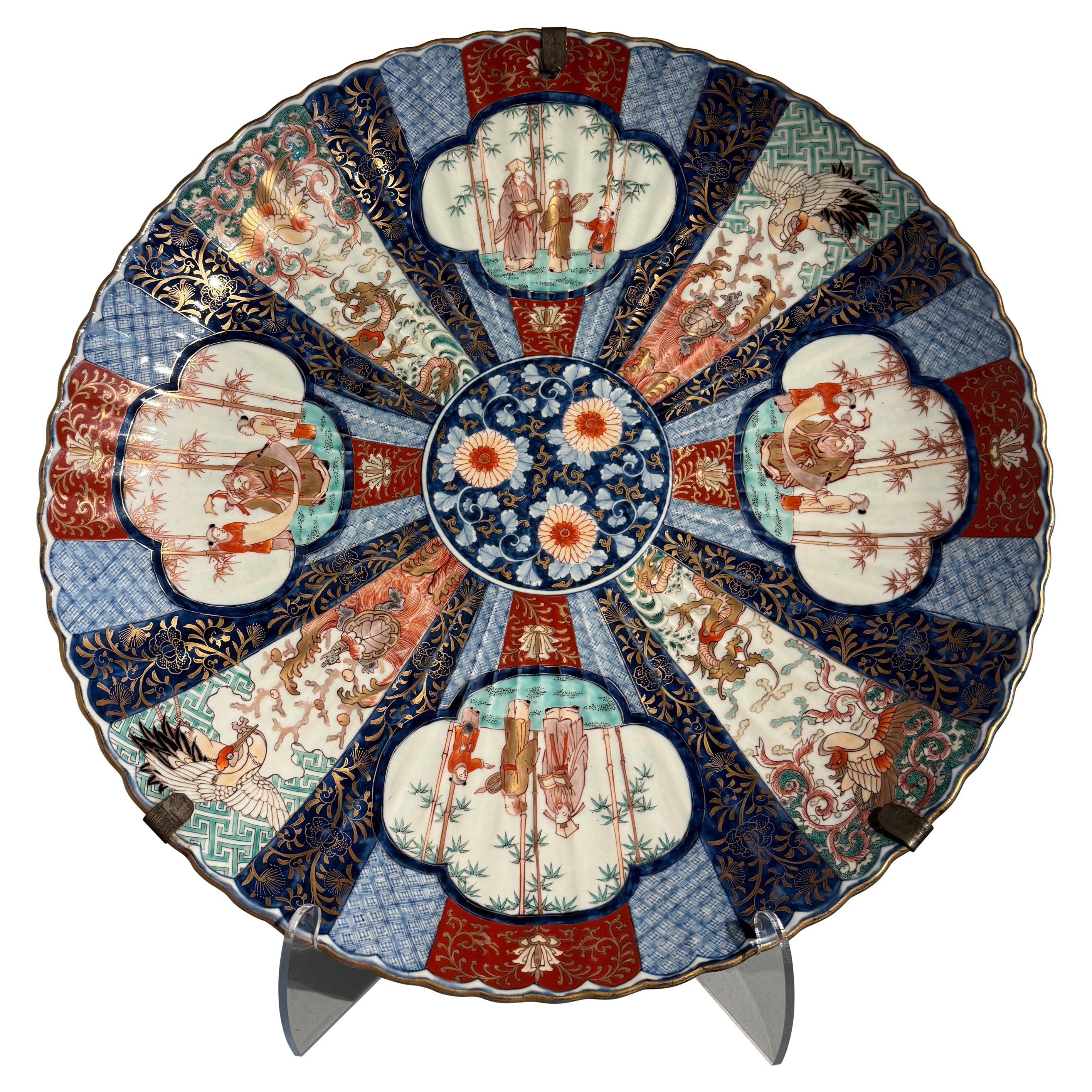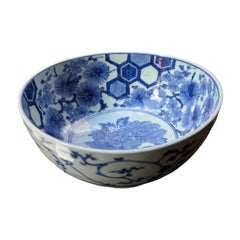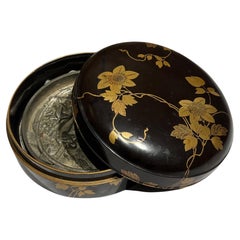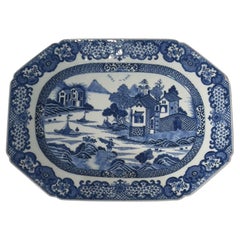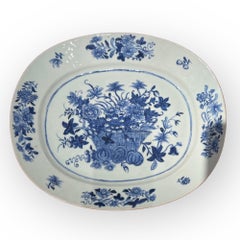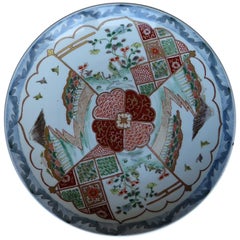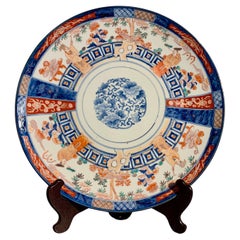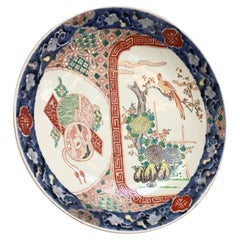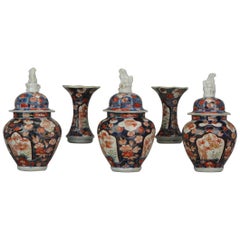Items Similar to Japan, a Late 18th Century Imari Charger, Edo Period
Want more images or videos?
Request additional images or videos from the seller
1 of 6
Japan, a Late 18th Century Imari Charger, Edo Period
About the Item
Nice hand painted Porcelain charger in the Imari palette using underglaze cobalt bleu and iron red.
Japan, Edo period, late 18th century.
- Dimensions:Height: 2.37 in (6 cm)Diameter: 16.15 in (41 cm)
- Materials and Techniques:
- Place of Origin:
- Period:
- Date of Manufacture:1780
- Condition:Wear consistent with age and use.
- Seller Location:PARIS, FR
- Reference Number:1stDibs: LU6491234049862
About the Seller
5.0
Recognized Seller
These prestigious sellers are industry leaders and represent the highest echelon for item quality and design.
Established in 1982
1stDibs seller since 2022
6 sales on 1stDibs
- ShippingRetrieving quote...Shipping from: PARIS, France
- Return Policy
Authenticity Guarantee
In the unlikely event there’s an issue with an item’s authenticity, contact us within 1 year for a full refund. DetailsMoney-Back Guarantee
If your item is not as described, is damaged in transit, or does not arrive, contact us within 7 days for a full refund. Details24-Hour Cancellation
You have a 24-hour grace period in which to reconsider your purchase, with no questions asked.Vetted Professional Sellers
Our world-class sellers must adhere to strict standards for service and quality, maintaining the integrity of our listings.Price-Match Guarantee
If you find that a seller listed the same item for a lower price elsewhere, we’ll match it.Trusted Global Delivery
Our best-in-class carrier network provides specialized shipping options worldwide, including custom delivery.More From This Seller
View AllJapanese porcelain blue and white Bowl, Japan , Arita Edo period, 18th Century
Located in PARIS, FR
This exquisite large Japanese porcelain bowl from Arita is in impeccable condition, boasting no signs of restoration. Its exterior showcases continuous karakusa scrolls inspired by t...
Category
Antique 18th Century Japanese Edo Decorative Bowls
Materials
Porcelain
$925 Sale Price
33% Off
Japanese Cast Bronze Mirror and lacqer box, Edo Period, 18th Century, Japan
Located in PARIS, FR
A heavy and finely cast Japanese bronze mirror decorated with pines , cranes wich are longevity symbols, The handle in the center is a a tutle which also symbolize longevity.
Edo Period, 18th century, Japan.
The small, round mirror with high walls has been intricately and exquisitely cast with symbols . The turtle has a domed shell pieced to allow a cord to be strung through for handling or hanging.
A five charactesr mark is cast on the border.
Mirror is 12 ,3 x 1,6 cm
Box is 14,2 x 5 cm
Surrounding the turtle and inscription is a densely cast landscape featuring pine trees with fantastic needles, two cranes with their 3 youngs, dense stalks of leafy bamboo. and a blooming prunus on the left side.
All are symbols of longevity. Bamboo also symbolizes resilience and prosperity. Bamboo asociated with prunus and pine are called the 3 frinds of winter.
The other side of the mirror is undecorated, and would originally have been highly polished, allowing the user to see their reflection in the polished surface.
The bronze with a wonderful, warm silver patina.
This mirror is presented in its original lacquer box , hand decorated in the Kodaiji style with gold lacquer flowers...
Category
Antique Late 18th Century Japanese Japonisme Metalwork
Materials
Bronze
China, 18th Century, Blue-and-White Decorated Dish, circa 1780
Located in PARIS, FR
China, 18th Century, Blue-and-White Decorated Dish, circa 1780
This Chinese export porcelain dish, made around 1780 during the reign of Emperor Qianlong (1736-1795), illustrates the ...
Category
Antique Late 18th Century Chinese British Colonial Ceramics
Materials
Porcelain
China, 18th Century, Blue-and-White Decorated Dish, circa 1760
Located in PARIS, FR
This porcelain plate, dated around 1760, features an exquisite design showcasing a basket adorned with delicately rendered flowers. Its smooth surface and refined brushwork attest to...
Category
Antique 1760s Chinese Chinese Export Ceramics
Materials
Porcelain
Japan, Set of Two Japanese Vases for Flower Arrangement, Ikebana
Located in PARIS, FR
Rare ceramic set of hand made vases Japanese flower arrangements. Very attractive even without flowers.
Hand made, hand painted and signed by the ar...
Category
Mid-20th Century Japanese Vases
Materials
Ceramic
Japan, Pair of Hokai boxes in lacquered wood, Edo period, 1829
Located in PARIS, FR
Japan, Pair of Hokai boxes in lacquered wood, Edo period, 1829
Japan, Rare Pair of Hokai boxes in lacquered wood, Edo period, dated Bunsei 12, 1829.
Hokai boxes are traditionally use...
Category
Antique 19th Century Japanese Chinoiserie Decorative Boxes
Materials
Lacquer
You May Also Like
Japanese Porcelain Charger Plate Finely Hand Painted, Edo Period Circa 1840
Located in Lincoln, Lincolnshire
This is an excellent example of a Japanese porcelain Charger or very large plate with a finely hand painted design, dating to the Edo period circa 1840 or possibly earlier.
This cha...
Category
Antique Mid-19th Century Japanese Edo Ceramics
Materials
Porcelain
Large Japanese Imari Charger, Edo/Meiji Period, mid 19th century, Japan
Located in Austin, TX
A large 18.25" diameter Japanese Imari porcelain charger, Edo to Meiji Period, mid 19th century, Japan.
The large charger of near flattened form and decorated in the typical Imari palette of underglaze blue with red, orange and green overglaze enamels and gilt highlights.
The design is centered on a roundel with a dense design of scrolling peony blossoms and leaves in underglaze blue. Two large pictorial reserves of Shinto priests...
Category
Antique Mid-19th Century Japanese Meiji Ceramics
Materials
Porcelain
Japanese Imari Charger, Meiji Period, Late 19th Century
Located in Austin, TX
A nicely decorated Japanese Meiji Period Imari charger, late 19th century, Japan.
The porcelain charger featuring a design of a hoho bird, or phoenix, per...
Category
Antique Late 19th Century Japanese Meiji Platters and Serveware
Materials
Enamel
Antique 18th Century Japanese Garniture Porcelain Vase Imari Edo Period
Located in Amsterdam, Noord Holland
Amazing set for decorating your home. Interesting foo dogs/lions as handles on the lids. The have small holes in them.
Condition:
Lids; 2 with restored chip and in some chips ...
Category
Antique 18th Century Japanese Edo Ceramics
Materials
Porcelain
$1,759 Sale Price
20% Off
Large Japanese Imari Charger 16", Edo / Meiji Period, mid 19th century, Japan
Located in Austin, TX
A large and charming Japanese imari charger with Chinese boys, Edo to Meiji Period, mid 19th century, Japan.
The large porcelain charger measuring 16" in diameter features high, slo...
Category
Antique 1860s Japanese Meiji Ceramics
Materials
Porcelain
Large Japanese Imari Fluted Charger, Edo/Meiji Period, Mid 19th Century, Japan
Located in Austin, TX
A large and impressive Japanese Imari porcelain fluted charger with scalloped rim, signed Kaji(chu?), Edo to Meiji Period, mid 19th century, Japan.
The magnificent Japanese Imari charger measures 25" in diameter, and is decorated in the typical imari palette of underglaze blue with overglaze red, orange, blue, and green enamels with gilt highlights. The large charger also features fluted sides and a scalloped gilt rim.
The design of the charger is centered on a central floral medallion with three large chrysanthemum blossoms and vegetal scrolls. Radiating out from the central medallion are various brocade patterned sections that roughly follow the shape of the fluting. Some larger sections feature images of cranes and minogame (turtles with long tails), both symbols of longevity, while other feature dragons and phoenix, symbols of authority and power. Four large reserves depict charming scenes of a scholar and his students within a bamboo grove having discourse and examining scrolls.
The back of the charger decorated in underglaze blue with bold floral and vegetal scrolls. With a three character inscription in underglaze blue reading Kaji(chu?) Sei.
The charger is fitted with an antique metal hanger...
Category
Antique Mid-19th Century Japanese Meiji Ceramics
Materials
Porcelain
Recently Viewed
View AllMore Ways To Browse
Japanese Ceramics Edo Period Or Earlier
Japanese A
Late 18th
Edo Period
Edo Period Japanese Art
18th Century Japanese Porcelain
18th Imari
Imari 18th Century
Japanese Imari Porcelain 18th Century
Antique Imari Charger
Antique Imari Chargers
18th Century Imari Charger
Edo Charger
Japanese Charger Edo
Enameled Bowls
Kraak Wanli
Magpie Antique
Qing Qianlong Bowl
